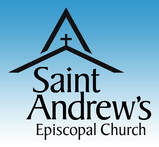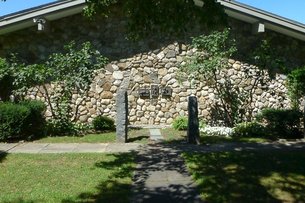FUNERALS
|
Our culture tends to deny or downplay death, but Christians can confront death head-on because we understand it to be a gateway to everlasting life with God. The funeral is first and foremost an act of worship. In a very real sense, the funeral is for the person who has died; it marks their passage from this life to the next. The funeral is also for the mourners; it helps them come to grips with the reality and finality of death while offering hope and meaning. Finally, like all worship, the aim of the funeral is not just human comfort but the glory of God. We encounter the living God whose unshakeable love for us defeats even death.
“Baptized Christians are properly buried from the church” (Book of Common Prayer, page 490). This is where we were baptized and began our eternal life; where we were nourished with Holy Communion; where we met in prayer and fellowship; and where Christians should be brought as they enter upon their heavenly inheritance. Even for people who have not been churchgoers but would like an Episcopal priest to preside at the funeral, the service should take place in church. If that is not possible, then a graveside service is usually the preferred alternative. |
Concerning burial OR cremation
|
Christianity proclaims: "Christ has been raised from the dead, the first fruits of those who have died" (1 Corinthians 15.20). The doctrine of the resurrection means that the physical body indeed perishes ("dust to dust”), and our risen life is based on a new creative act of God. Efforts to renew and enhance the mortal body by morticians are unnecessary for Christians. In pagan spirituality (as well as ancient Greek, Hindu, and Egyptian practices) the body should be prepared for immortality. Resurrection, in contrast, means transformation and new creation, so a Christian does not need embalming (unless the body must be held for some time), cosmetic enhancement, or an expensive casket. Since resurrection is a new creation, cremation is entirely consonant with Christian belief.
The norm for Episcopal funerals is to have the body or the ashes present at the service in church. The Prayer Book emphasizes its importance for both the liturgy and the pastoral needs of the bereaved. If a person is to be buried, the funeral may take place soon after the death with the closed casket in church. Burial usually takes place the same day, perhaps after the Reception if it is desired that only family members be at the graveside. |
In the winter months when the ground is frozen, a Reception may follow the funeral in church while the casket is transported to Elkins Cemetery for storage until the ground has thawed and burial can be arranged in a cemetery. If a person is to be cremated, the funeral may take place in church soon after the death with a closed casket in church (Chadwick Funeral Service has simple wooden caskets that aren’t much more expensive than the rigid cardboard boxes that are required for all cremations). Alternatively (and more conveniently when loved ones live at a distance), cremation can take place as soon as the law permits (usually 48 hours), and the funeral follows at a later date with the cremated remains in church. The interment or scattering of ashes can take place immediately or later. If it’s not possible to have the body or cremated remains present, the service in church is still a funeral. Properly speaking, a memorial service takes place at a later date (such as an anniversary) or in a different location. “Funeral” seems to have fallen out of favor, and if the family prefers “Celebration of Life,” that’s fine.
The Service
|
Prayer Book urges that the funeral be held at a time when the congregation can be present, and an evening service is quite possible. An Episcopal funeral normally includes the Eucharist which provides a special bond between those who gather for holy communion and those who share in the heavenly banquet in the New Jerusalem. If communion is not appropriate the Book of Common Prayer provides a Burial Office in both traditional (Rite I) or contemporary (Rite II) language. A Prayer Book supplement has special provision for the death of a child. Episcopal tradition provides a structure for the service, but there is a great deal of flexibility, and the funeral service can be specially tailored to reflect the life of the person who has died.
|
Church members are always welcome to meet with the clergy to discuss and plan their own funeral. Otherwise, the clergy plan the details of the funeral in consultation with the family. A selection of scripture readings is provided with the Prayer Book rites (pages 470- 480 and 494-495), but other lessons may be chosen. There is also scope to include prose or poetry from outside the bible. A sermon may be preached that speaks of both the deceased and our Christian inheritance. Alternatively, family members and friends may speak personally of the deceased in earlier tributes, leaving the ordained minister to preach a briefer sermon that communicates the Gospel of hope.
The Commendation takes place near the conclusion of the service. The priest may cense the coffin with incense and/or sprinkle the coffin with baptismal water and then may stand by the coffin as s/he commends the deceased to God’s merciful keeping.
The Committal is the final act of giving the body or ashes back to the elements, and of letting go. This part of the service is very short, consisting of a short scripture passage, brief prayers, and the words of committal. Whether the coffin or a container of ashes is to be interred, family members are encouraged to wait for the lowering, and then to place or toss earth on top as a final parting gesture.
The Commendation takes place near the conclusion of the service. The priest may cense the coffin with incense and/or sprinkle the coffin with baptismal water and then may stand by the coffin as s/he commends the deceased to God’s merciful keeping.
The Committal is the final act of giving the body or ashes back to the elements, and of letting go. This part of the service is very short, consisting of a short scripture passage, brief prayers, and the words of committal. Whether the coffin or a container of ashes is to be interred, family members are encouraged to wait for the lowering, and then to place or toss earth on top as a final parting gesture.
music
Music plays an important role in funerals. While the musical tone should be uplifting, a funeral can helpfully acknowledge and encompass our grief before leading us to the joyful hope of resurrection. A well-chosen hymn early in the service (perhaps based on a psalm such as O God, our help in ages past) can connect with the pain of parting, while hymns later in the service can be more joyful. Family favorites may be chosen if they’re appropriate. The clergy and organist can help with suggestions for hymns.
Flowers, printed Order-of-service, fees, reception
Flowers may be provided by the flower guild, the family, or a florist. Rather than providing huge bouquets of flowers, friends and family of the deceased should be encouraged to contribute to a charity or to church.
A printed Order of Service is usually helpful, especially if a number of those present are not church members. The family, clergy and parish administrator collaborate to put this together.
The church’s fee for a funeral is $400 (including committal and clergy honorarium) but this is waived for church members. There is also a $250 fee for the organist.
A reception after the funeral can be hosted in the Parish Hall, and the parish administrator will schedule this and liaise with our volunteers about providing refreshments.
A printed Order of Service is usually helpful, especially if a number of those present are not church members. The family, clergy and parish administrator collaborate to put this together.
The church’s fee for a funeral is $400 (including committal and clergy honorarium) but this is waived for church members. There is also a $250 fee for the organist.
A reception after the funeral can be hosted in the Parish Hall, and the parish administrator will schedule this and liaise with our volunteers about providing refreshments.
|
Click below for printable version of: Funeral Liturgy Planner Burial or Cremation Instructions This Web Page |






